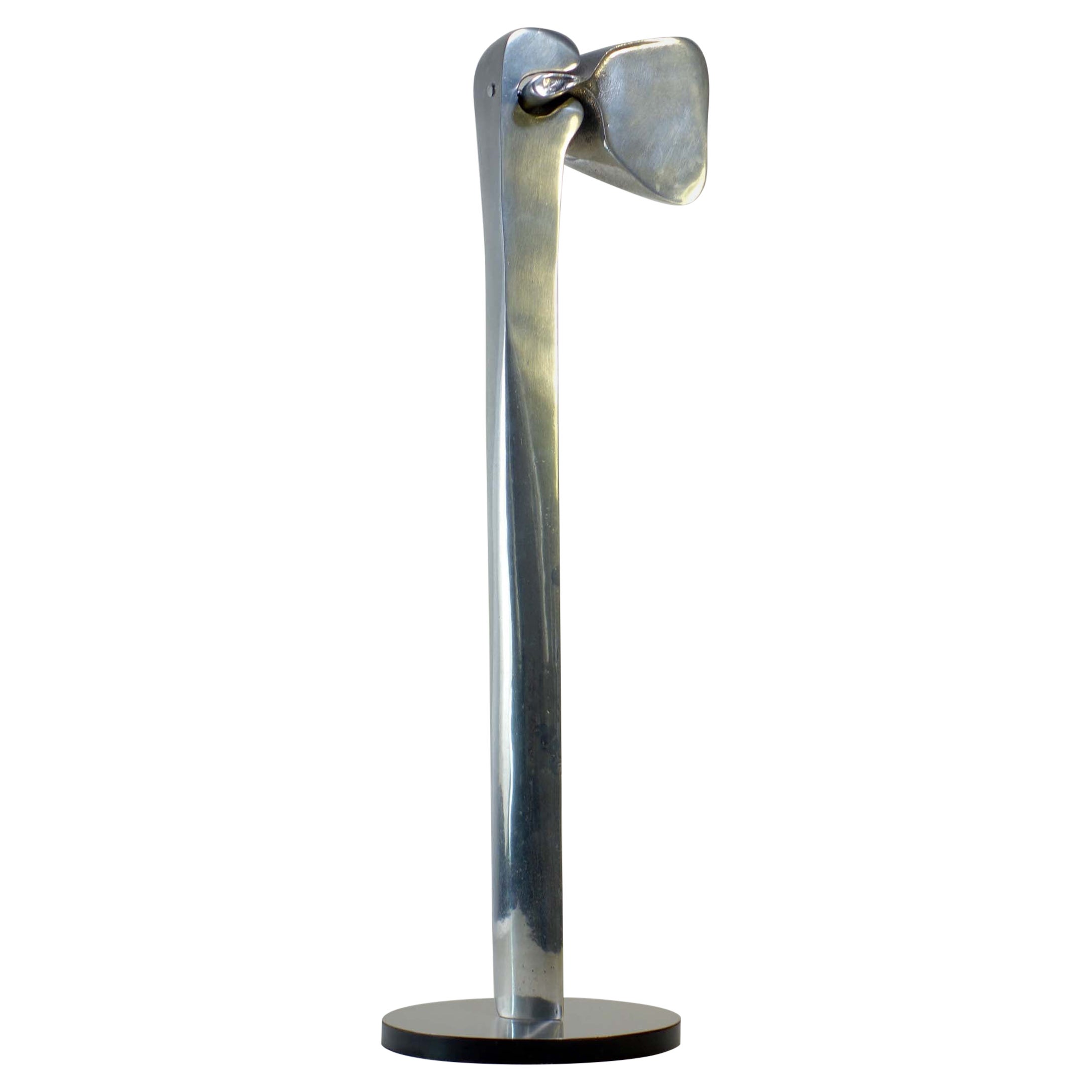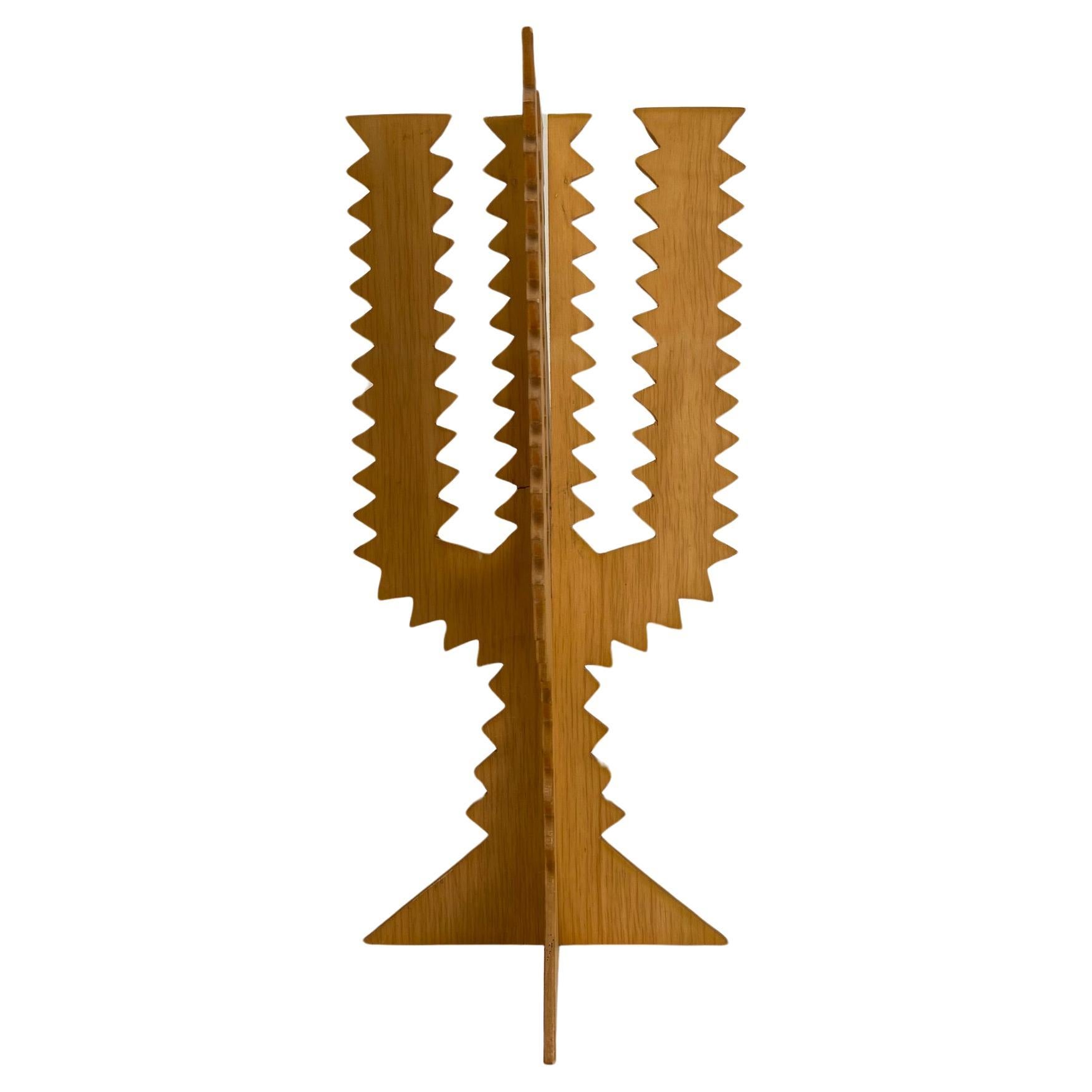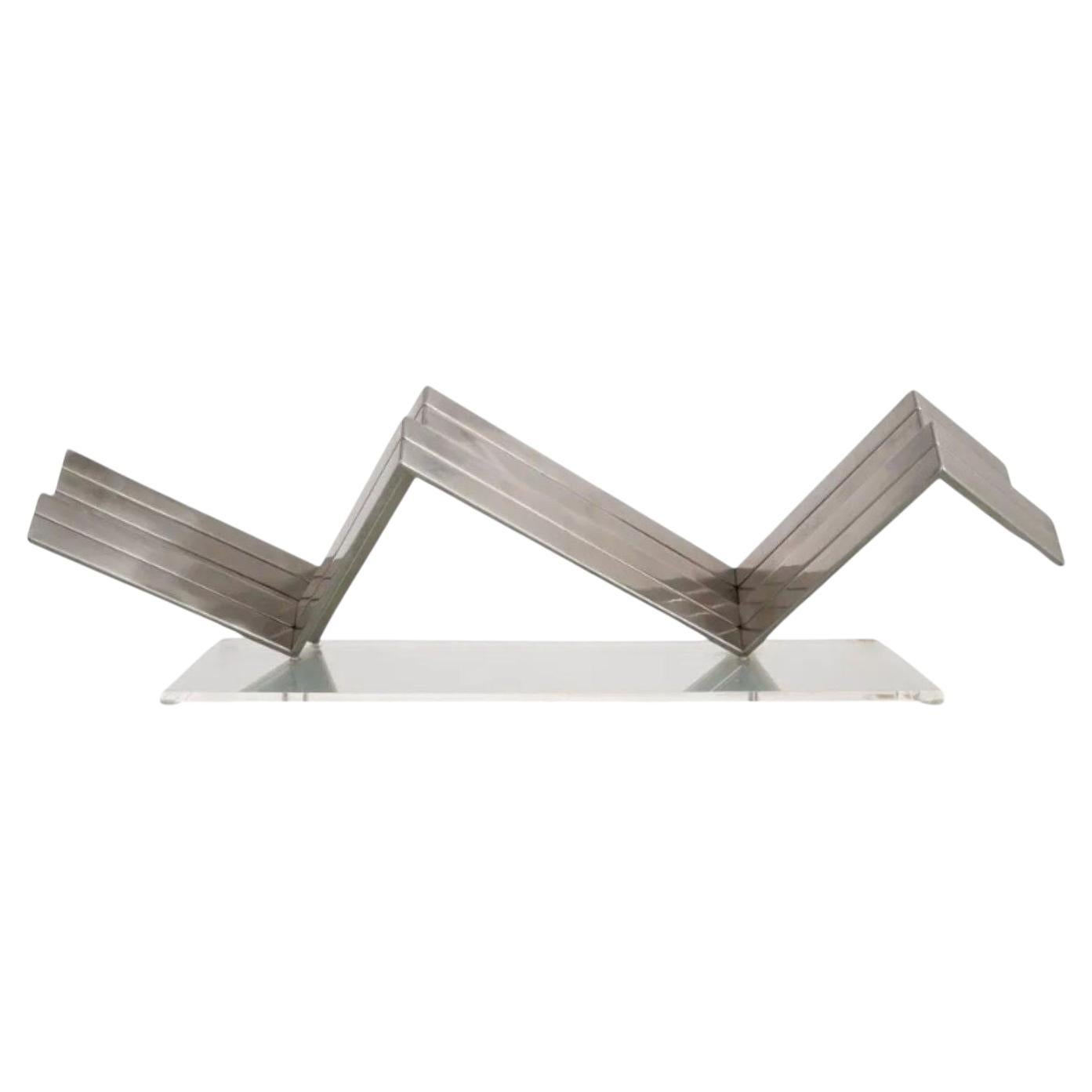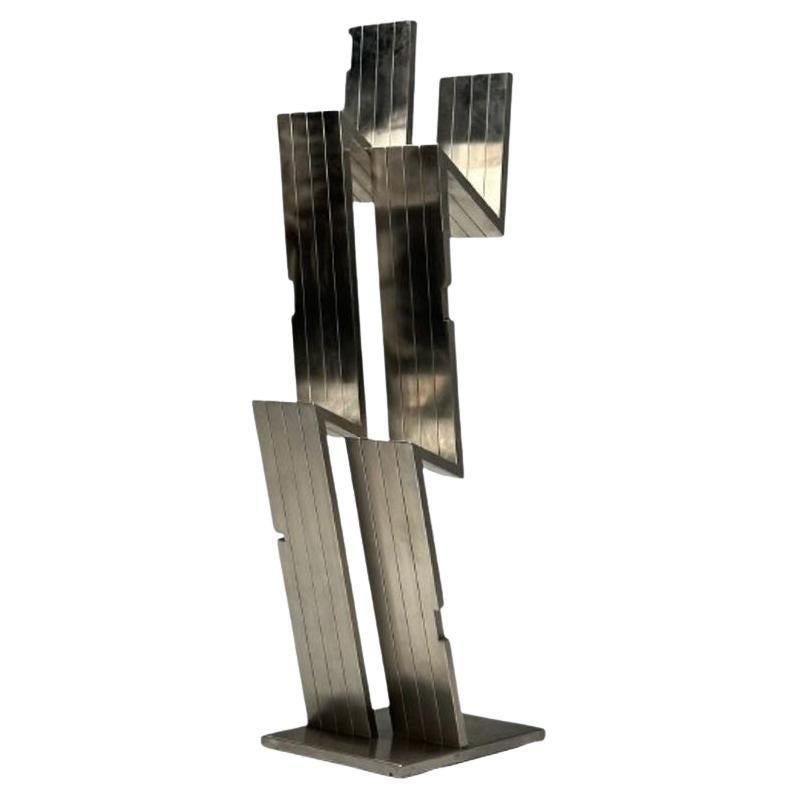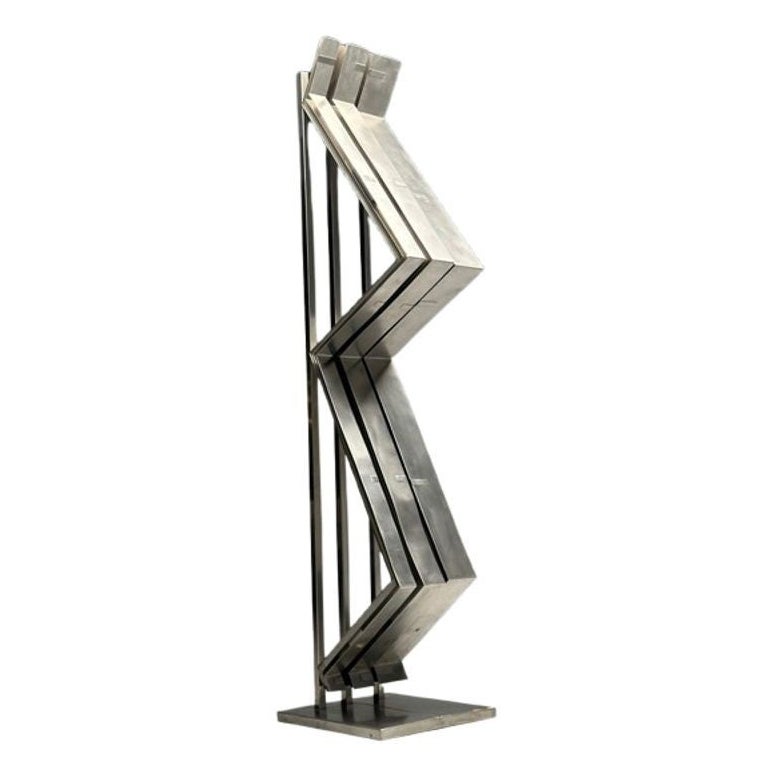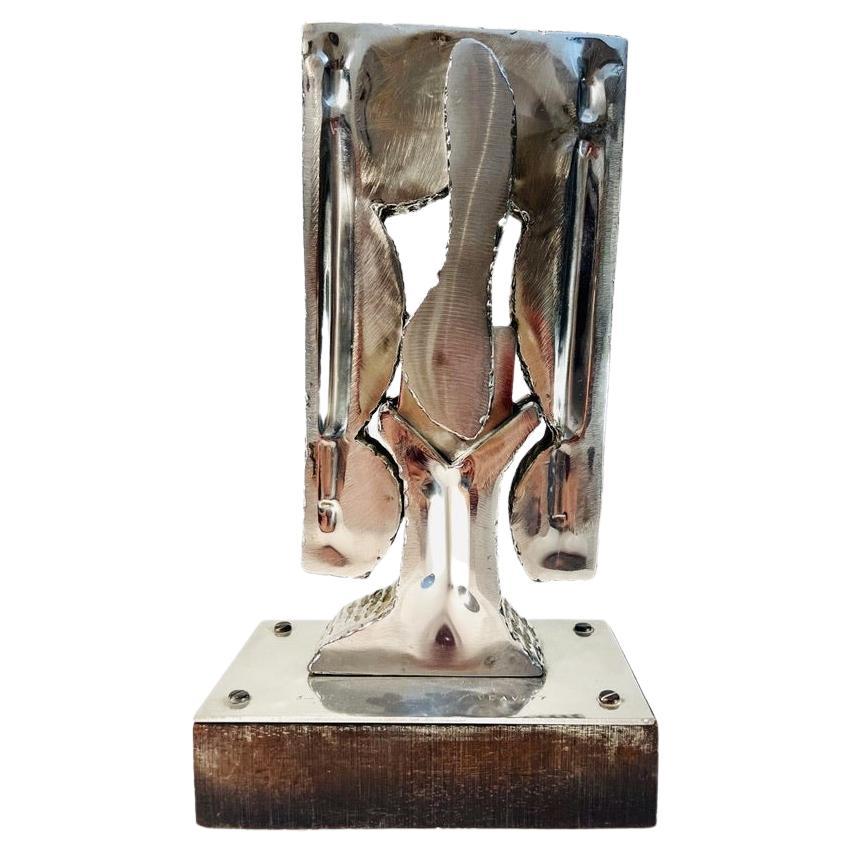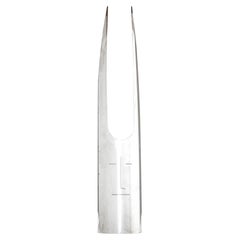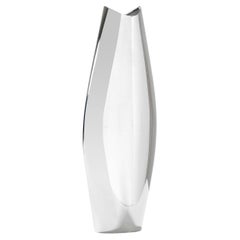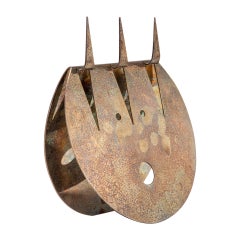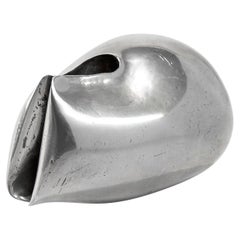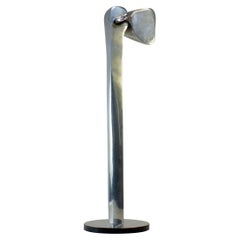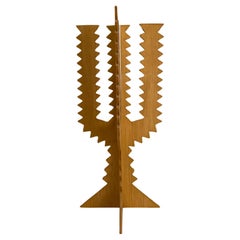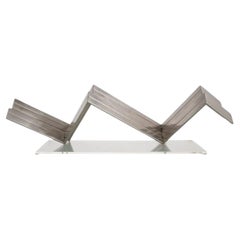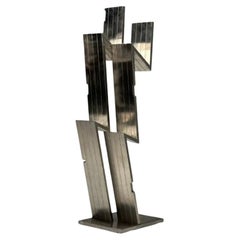Items Similar to 20th Century Giacomo Balla for Gavina Sculpture model Nuvolo in Steel
Want more images or videos?
Request additional images or videos from the seller
1 of 6
20th Century Giacomo Balla for Gavina Sculpture model Nuvolo in Steel
$4,433.13
£3,300.18
€3,700
CA$6,072.28
A$6,753.70
CHF 3,526.57
MX$82,185.38
NOK 45,039.73
SEK 42,239.32
DKK 28,166.81
Shipping
Retrieving quote...The 1stDibs Promise:
Authenticity Guarantee,
Money-Back Guarantee,
24-Hour Cancellation
About the Item
Gavina is among Italy's leading historical brands of designer furniture. Founded in the 1960s by Dino Gavina, one of the most important entrepreneurial figures in the Italian furniture and Design sector, the Gavina SpA company has in fact been and still is a point of reference and inspiration for many other companies in the sector, both Italian and international.
Here we do have a sculpture model Nuvolo after the draw of the italian artist Giacomo Balla of 1968, for the series "Fiori Futuristi" (Futurists flowers). After these drawings, the sculpture was produces at the beginning of 2000.
Consider this piece as never used, in very good condition and with their original packaging.
Signed and with its series number as shown in photo.
Ready to be shipped.
- Creator:Gavina (Manufacturer),(after) Giacomo Balla (Artist)
- Dimensions:Height: 22.84 in (58 cm)Width: 13.78 in (35 cm)Depth: 13 in (33 cm)
- Style:Mid-Century Modern (Of the Period)
- Materials and Techniques:
- Place of Origin:
- Period:
- Date of Manufacture:2004
- Condition:Wear consistent with age and use.
- Seller Location:Turin, IT
- Reference Number:1stDibs: LU5450238098482
About the Seller
4.9
Recognized Seller
These prestigious sellers are industry leaders and represent the highest echelon for item quality and design.
Platinum Seller
Premium sellers with a 4.7+ rating and 24-hour response times
Established in 2019
1stDibs seller since 2020
89 sales on 1stDibs
Typical response time: <1 hour
- ShippingRetrieving quote...Shipping from: Torino, Italy
- Return Policy
Authenticity Guarantee
In the unlikely event there’s an issue with an item’s authenticity, contact us within 1 year for a full refund. DetailsMoney-Back Guarantee
If your item is not as described, is damaged in transit, or does not arrive, contact us within 7 days for a full refund. Details24-Hour Cancellation
You have a 24-hour grace period in which to reconsider your purchase, with no questions asked.Vetted Professional Sellers
Our world-class sellers must adhere to strict standards for service and quality, maintaining the integrity of our listings.Price-Match Guarantee
If you find that a seller listed the same item for a lower price elsewhere, we’ll match it.Trusted Global Delivery
Our best-in-class carrier network provides specialized shipping options worldwide, including custom delivery.More From This Seller
View All20th Century Gio Ponti and Lino Sabattini Sculpture Maschera Cornuta, 1978
By Gio Ponti, Lino Sabattini
Located in Turin, Turin
Now thirty, Sabattini moved from Blevio to Milan, where he found a small laboratory with all the essential tools of his Craft. His contacts with “Domus” became more frequent. This be...
Category
Vintage 1970s Italian Mid-Century Modern Busts
Materials
Metal
20th Century Lino Sabattini Vase Model Living in Silvered Metal '70s
By Sabattini Argenteria, Lino Sabattini
Located in Turin, Turin
Vase model "Living" by Lino Sabattini in Silvered Metal, produced in '70s.
Very good condition, as never used, fully original.
Presence of the signature as shown in photo.
Category
Vintage 1970s Italian Mid-Century Modern Centerpieces
Materials
Metal
20th Century Gio Ponti and Lino Sabattini Sculpture La Luna Strega, 1978
By Gio Ponti, Lino Sabattini
Located in Turin, Turin
Now thirty, Sabattini moved from Blevio to Milan, where he found a small laboratory with all the essential tools of his craft. His contacts with “Domus” became more frequent. This be...
Category
Vintage 1970s Italian Mid-Century Modern Busts
Materials
Metal
20th Century Giacomo Benevelli Chromed Sculture, 60s
By Giacomo Benevelli
Located in Turin, Turin
Giacomo Benevelli is an italian sculpture born in Reggio Emilia in 1925. He was the son of Anselmo Govi, important italian painter, meaning that art ...
Category
Vintage 1960s Italian Mid-Century Modern Abstract Sculptures
Materials
Chrome
20th Century Lino Sabattini Vase Model Persepoli in Silvered Metal 1964
By Sabattini Argenteria, Lino Sabattini
Located in Turin, Turin
Vase model "Persepoli" by Lino Sabattini in Silvered Metal, produced in '70s.
Very good condition, as never used, fully original.
Presence of the signature as shown in photo.
Category
Vintage 1960s Italian Mid-Century Modern Centerpieces
Materials
Metal
20th Century Lino Sabattini Centerpiece Model Baja in Silvered Metal 1973
By Sabattini Argenteria, Lino Sabattini
Located in Turin, Turin
Centerpiece model "Baja" by Lino Sabattini in Silvered Metal, produced in '70s.
Very good condition, as never used, fully original.
Presence of the signature with name of the model.
Category
Vintage 1970s Italian Mid-Century Modern Centerpieces
Materials
Metal
You May Also Like
1970 Giacomo Benevelli Modernist Cast Steel Inox Sculpture
By Giacomo Benevelli
Located in Brescia, IT
Giacomo Benevelli
1973
Cast Steel Inox Sculpture
Very Good Condiction
Category
Vintage 1970s Italian Modern Abstract Sculptures
Materials
Steel
Giacomo Balla, Cactus model Sculpture Gavina 1968 (Wodden Prototype)
By Gavina, Giacomo Balla
Located in Argelato, BO
In 1968 with a letter to Dino Gavina by Luce and Elica, Giacomo Balla's daughters, they asked for a reproduction of the Futuristi Flowers drawn by their father.
Before putting the ...
Category
Vintage 1960s Italian Futurist Abstract Sculptures
Materials
Wood
Salvatore Messina, Italian Mid-Century Modern, Steel, Abstract Sculpture, 1970s
Located in Manhasset, NY
Salvatore Messina, Italian Mid-Century Modern, Steel, Abstract Sculpture, 1970s
Titled "“Horizontal decomposed refraction,” this work is an abstract folded steel sculpture on a plex...
Category
Vintage 1970s Italian Mid-Century Modern Abstract Sculptures
Materials
Steel
Salvatore Messina, Italian Mid-Century Modern, Abstract Sculpture, Steel, 1970s
Located in Manhasset, NY
Salvatore Messina, Italian Mid-Century Modern, 'Vertical Refraction' Sculpture, Steel, Italy, 1970s
Indoor or outdoor modernist geometric sculpture designed by Salvatore Messina and...
Category
Vintage 1970s Abstract Sculptures
Materials
Steel
Salvatore Messina, Italian Mid-Century Modern, Abstract Sculpture, Steel, 1970s
Located in Manhasset, NY
Salvatore Messina, Italian Mid-Century Modern, 'Vertical Decomposed Refraction' Sculpture, Steel, Italy, 1970s
This impressive large sculpture, titled "Vertical Decomposed Refraction...
Category
Late 20th Century Abstract Sculptures
Materials
Stainless Steel
Steel Sculpture by Nicolas Vlavianos, 1970
By Nicolas Vlavianos
Located in Rio De Janeiro, RJ
Steel sculpture signed and dated Vlavianos in perfect conditions.
Category
Vintage 1970s Greek International Style Abstract Sculptures
Materials
Steel
